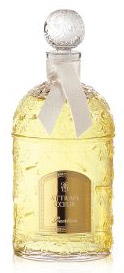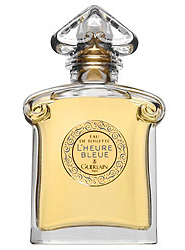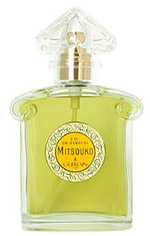Les Parisiennes is Guerlain’s reintroduction of popular classics that may have dropped off the house’s roster due to unpopularity, changing times, new restrictions on fragrance ingredients, or someone having a bad hair day. Among them is the famous Attrape Coeur (Heart Trapper in French). 
In Bottle: Attrape Coeur has a fresh, lightly floral scent in the bottle. It has a certain, understated feminine charm that leads you to think it’s a mild jasmine-rosey concoction that’s easy to wear and easy to pull off.
Applied: The real heart of Attrape Coeur (heh) lies in the middle and base notes. As the top notes fade away, it unfolds to reveal a darker, muskier, more sensual scent making full use of tuberose as tuberose was meant to be used. This isn’t what I smelled in the bottle, it’s a definite morpher as she goes from light and lilting to full on oriental fragrance. The jasmine, tuberose and rose are a great compliment the smooth and musky mid-stage with its faintly sweet and dry scent. The mid-stage is especially familiar as little bits of Mitsouko waft in and out of this one. The best part about Attrape Coeur is its dry down. This fragrance falls into dense woods, bright spices, smooth vanilla, and that fantastic Guerlinade.
Extra: Les Parisiennes is an exclusive Guerlain collection that’s only available in very select locations. I found it at my local Holt Renfrew and La Signature at Epcot in Florida. If you can find a big Guerlain counter, you will probably be able to find this line. And I highly recommend anybody interested in perfumes to stop by and test a couple of them. Most of them are masterpieces that are so far above and beyond what you usually see in modern perfumery. Attrape Coeur used to go by the name of Guet Apens.
Design: Attrape Coeur, like other scents in the Les Parisiennes line, is bottled in a beautiful classic bee bottle. The bottles for these things are the real deal, not the semi-bee bottle situation you get with the Aqua Allegorias but the full-on deal. It’s complete with bee designs on the glass. Les Parisiennes are not spray bottles but splash that you will have to dab on yourself. I sometimes prefer the splash bottles to the sprays because once the fragrance is all gone, the bottle can still be reused and to not reuse a bee bottle would be something of a crime.
Fragrance Family: Oriental
Notes: Rose, jasmine, tuberose, peach, spices, sandalwood, amber, vanilla, musk.
I get a little jealous every time I look at the bee bottles. They’re really excellent looking pieces that will live well beyond the point when the fragrances they hold are all used up.
Reviewed in This Post: Attrape Coeur, 2008, Eau de Parfum.





